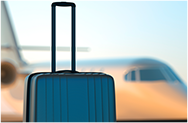A thin piece of land stretches across the Caribbean Sea connecting Central and South America. Here, a mosaic of cultures, cuisines, and history come together for a diverse destination. Panama is easy to explore—will you dine your way through Panama City, hike the hills in Boquete, or escape to the secluded island of Bocas del Toro?
Panama has it all: bustling cities, beautiful natural escapes, and of course the engineering marvel of the Panama Canal.
Our Panama Travel Guide gives you the inside scoop on where to stay and what to do across the country for the perfect trip.
Editor’s Note: This article is sponsored by HotelBeds.
The Best Hotels in Panama
Panama has a hotel to suit every type of traveler, from boutique beachside properties to all-inclusive resorts.
Los Establos Boutique Resort
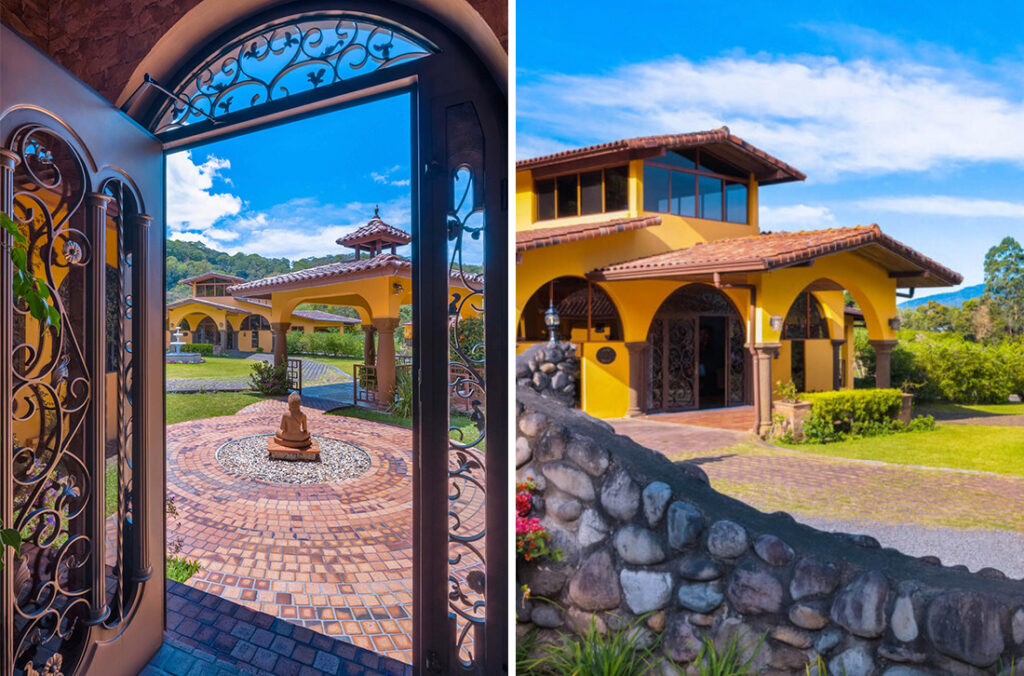
Perched 4,000 feet above sea level, this 16-acre resort in the heart of Boquete offers stunning views of Volcan Baru. Los Establos Boutique Resort is home to a 100-year-old working coffee plantation, so you’re guaranteed to have the best cup of java along with your breakfast each morning.
A stay at this all-inclusive resort includes all meals, beverages, and a variety of tours (like ziplining and whitewater rafting).
W Panama
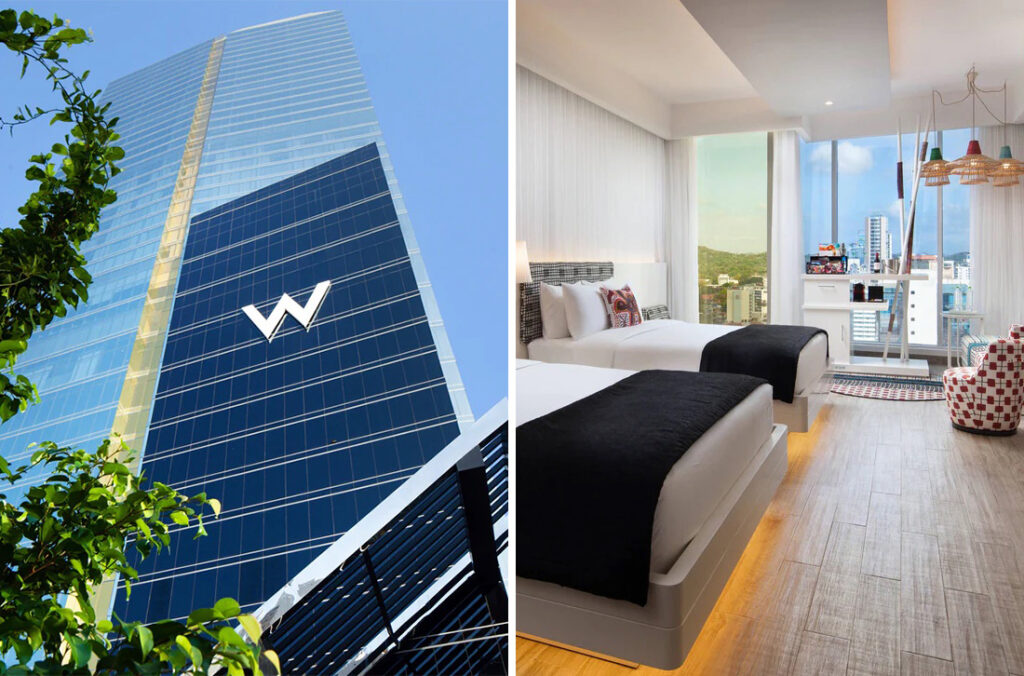

The W Panama’s central location makes it easy to explore Panama City. Set in the heart of the business district, the hotel is a quick 15-minute walk from Casco Viejo and just five minutes from La Cinta Costera.
If you have a furry friend joining you on your Panama trip, the W Panama is a great choice, as it’s a pet-friendly property.
Riu Playa Blanca Panama
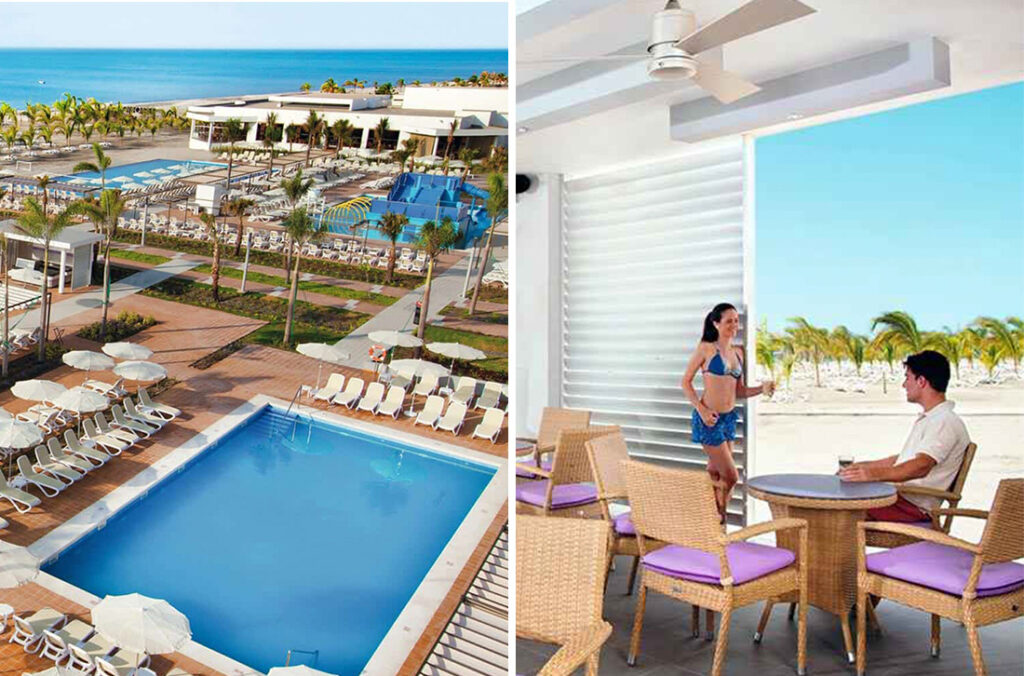

For a relaxing Panama beach vacation, check into the Riu Playa Blanca. The resort has a prime oceanfront location in Playa Blanca. The all-inclusive package includes meals drinks, activities, and entertainment.
The family-friendly hotel offers childcare through Riuland, the property’s fun kids’ club.
Cosmic Crab Resort
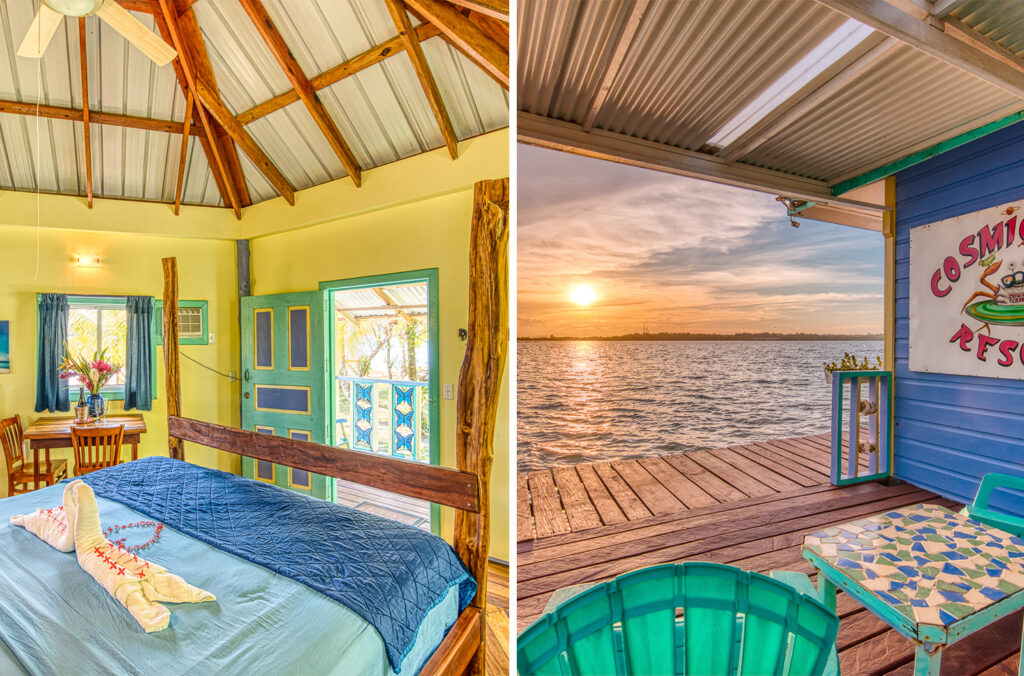

Island paradise awaits at Cosmic Crab Resort, located on the quiet island of Isla Carenero in Bocas del Toro. The peaceful resort sits between the lush rainforest and stunning waterfront. Despite the serene setting, the island is just a two-minute boat ride away from Bocas Town for when you want to liven things up.
Book one of the overwater mini cabins for a truly special trip.
Dreams Playa Bonita Panama
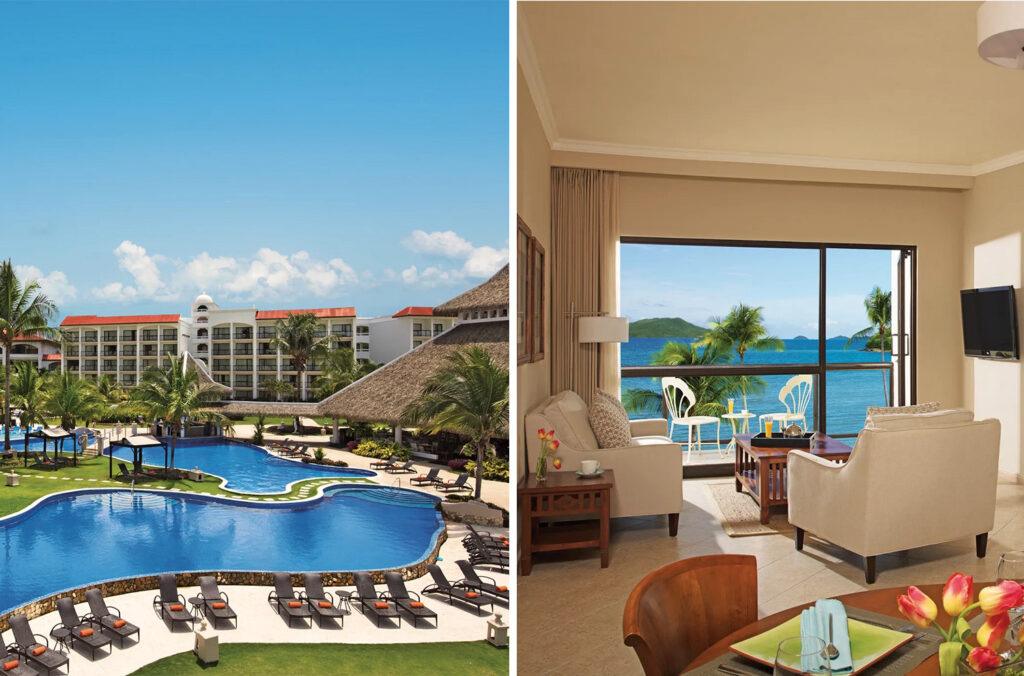

Unlimited luxury is the theme at Dreams Playa Bonita. Everything you could possibly want is included with your stay—like meals at the eleven restaurants and bars, top-shelf drinks, entertainment, and premium activities (such as whale watching and turtle hatching tours).
All rooms include private outdoor space, 24-hour room service, and a free minibar.
Holiday Inn, Panama Canal
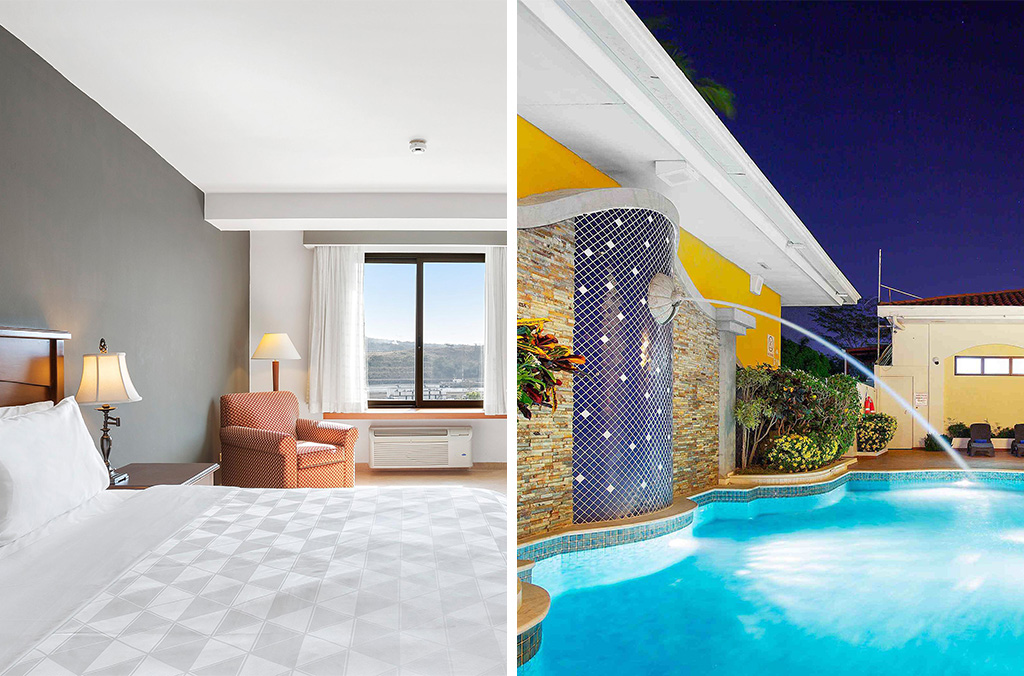

The Holiday Inn, Panama Canal is the best hotel near the Panama Canal. Book a Panama Canal View room and have an unforgettable view as soon as you wake up. The Miraflores Locks Visitors Center is just two minutes away from the property.
The hotel offers a free shuttle to Albrook Mall, where there are more than 500 shops and restaurants to explore.
Waldorf Astoria Panama
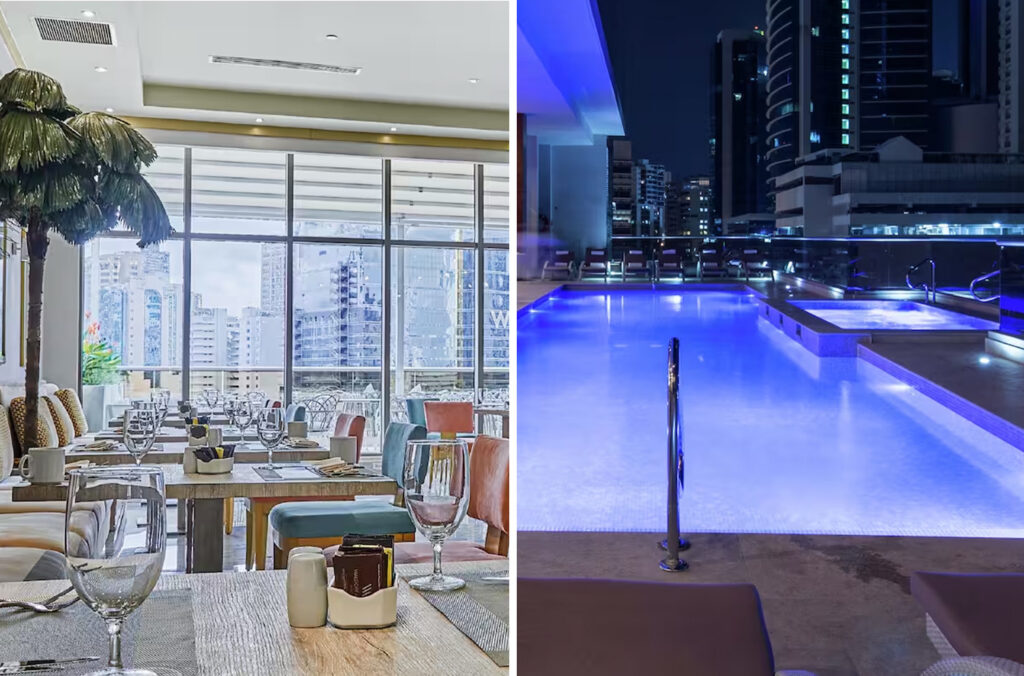

The Waldorf Astoria is one of the most luxurious hotels in Panama, and the property’s premium location just blocks from the Business District and waterfront only adds to the appeal.
Travelers looking for a bit more space should book the Waldorf’s Condo Suites, which offer incredible Panama Bay and Pacific Ocean views, a suite with a king bed, and a separate sitting area.
Red Frog Beach Island Resort
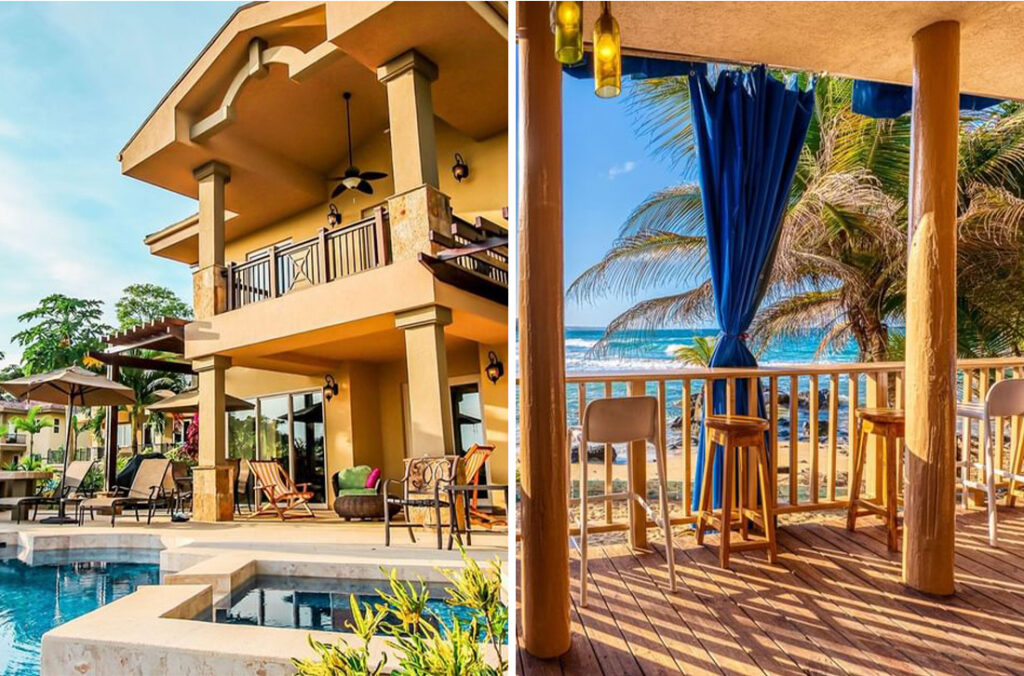

Red Frog Beach Island Resort is one of the best hotels in Bocas del Toro. Located on beautiful Bastimente Island, the resort is surrounded by lush forest and a private Caribbean beach.
Sleepy Bastimente Island offers plenty of peace and quiet, but Bocas Town is just a 15-minute boat ride away on one of the resort’s own speed boats.
La Loma Jungle Lodge
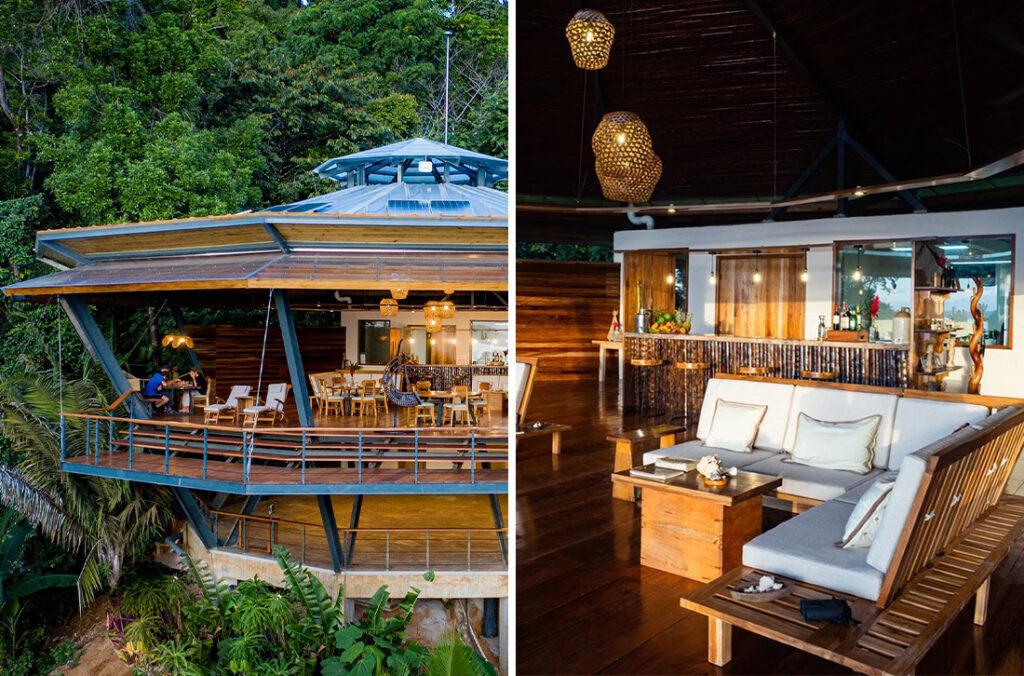

In the heart of the Isla Bastimentos rainforest, La Loma Jungle Lodge occupies 55 acres of lush land, stretching from Bahia Honda Bay to the highest point on the island. Just next door, the National Marine Park offers more opportunities for exploration.
La Loma has its own jungle farm, where the fruits and vegetables grown on property are used for guests’ meals.
Bungalow-style rooms give the feeling of sleeping in a treehouse and are equipped with private hammocks. Bigger groups can book the open-air, three-bedroom Cacaoc Farmhouse.
Aloft Panama
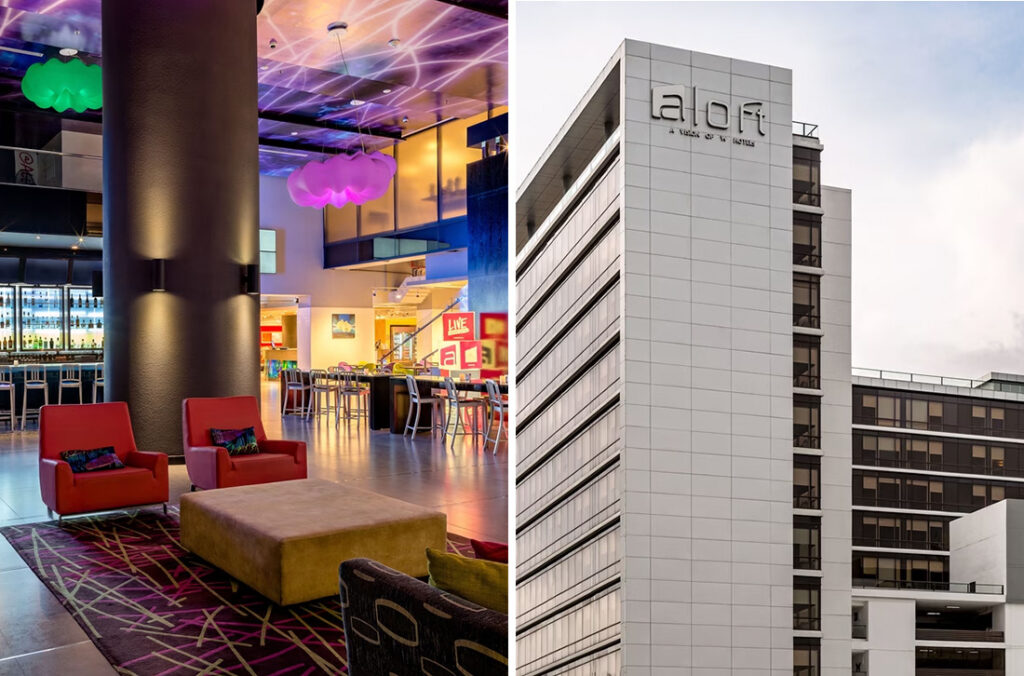

Looking for the best budget hotel in Panama? The wallet-friendly Aloft Panama offers clean and comfortable accommodation at very affordable rates. Located next to the Atlapa Convention Center and featuring over 3,000 square feet of public space with areas to work remotely, this property is popular with business travelers as well.
The Best Places to Visit in Panama
Panama’s 30,000 square miles pack in a ton of ecological diversity. You can hike the 12th highest peak in Central America and snorkel among stingrays all on the same trip.
Panama City
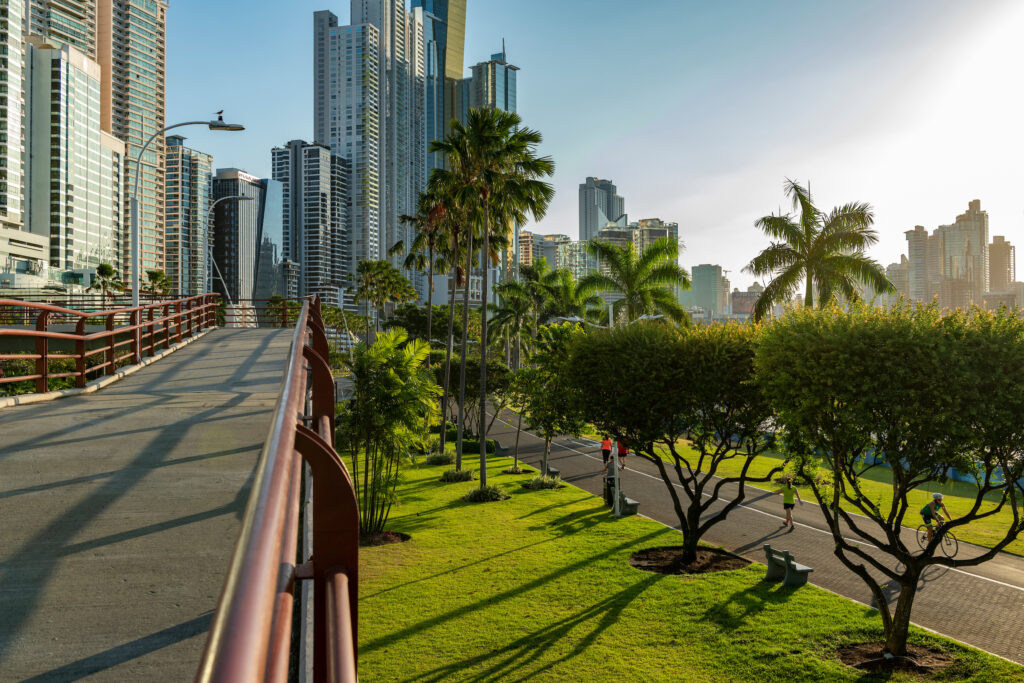

Most trips will start and end in Panama City at Tocumen International Airport, and there are plenty of reasons to stick around this capital city. In a city full of towering skyscrapers, you might be surprised to find a tropical rainforest within the city limits—so you can experience the country’s thriving culture and beautiful nature all without ever venturing out of Panama City.
Things to Do
- Panama Canal: You can’t come to Panama without paying homage to the Panama Canal, one of the seven man-made wonders of the world.
- Cerro Ancón: Hike to Panama City’s highest point.
- Metropolitan Natural Park: A 573-acre park in the heart of Panama City where you can spot wildlife and escape from the hustle and bustle.
- Casco Antiguo: Panama City’s charming old city is a UNESCO Cultural World Heritage site.
- Cinta Costera: Rent a bike and cycle (or walk) along this picturesque path running along Panama Bay.
- Visit one of the many rooftop bars and restaurants in Panama City.
Bocas del Toro
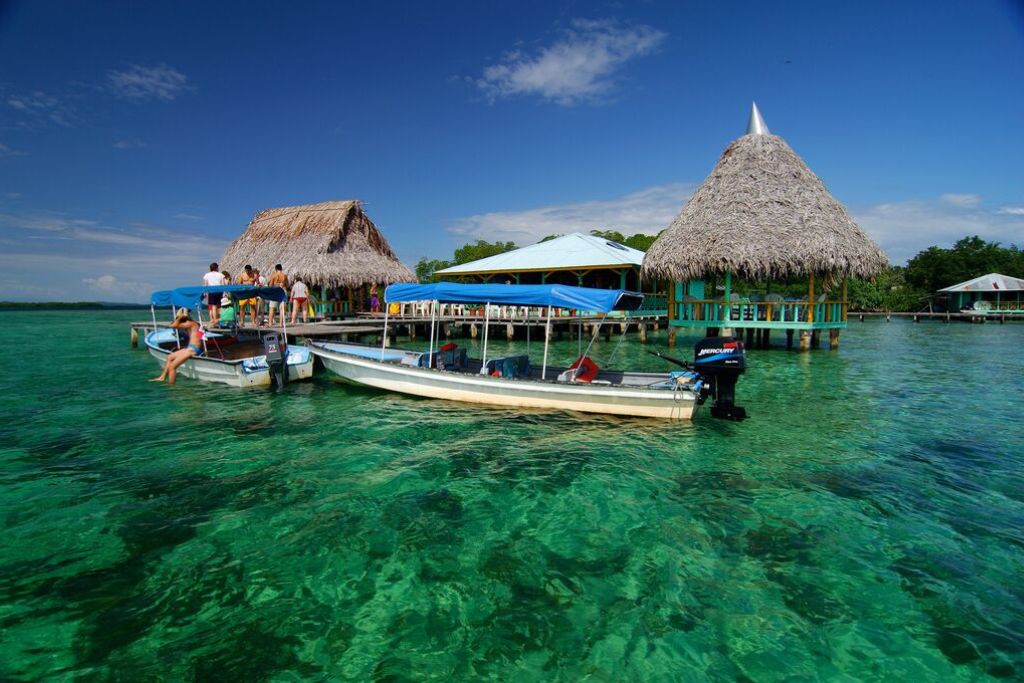

If you’re looking for a truly tropical escape, head to the Bocas Del Toro archipelago which is home to some of the best beaches in the country.
Things to Do
- Crawl Cay: Take a dip at one of the best snorkeling spots in Bocas del Toro.
- Check out the nightlife in Bocas Town: Live music and frozen drinks make the perfect nightcap.
- Isla Bastimentos National Marine Park: A protected area with pristine beaches and lots of wildlife.
- Isla Carenero: This small island is just two minutes from Bocas Town, making it an easy day trip.
- Witness one of the most magical sites in nature on a bioluminescent tour.
- See how chocolate is made on a cacao farm visit.
- Learn from the local Ngäbe and NasoTjerdi indigenous cultures.
- Get out on the water by taking a surfing class, renting snorkeling gear, or going diving.
Boquete
Nestled in the highlands of Chiriquí, Boquete draws adventure-loving visitors to this small mountain town for hiking, rafting, and more.
Things to Do
- Climb Volcán Barú: Summit Panama’s highest point, which is one of the only places in the world where you can see the Atlantic and Pacific Oceans simultaneously.
- Tour a coffee plantation: This region produces some of the best (and most expensive) coffee in the world.
- Whitewater rafting: Challenge Class II and III rapids on a day trip from Boquete.
- Hike The Lost Waterfalls: This trail takes you through the cloud forest to three waterfalls.
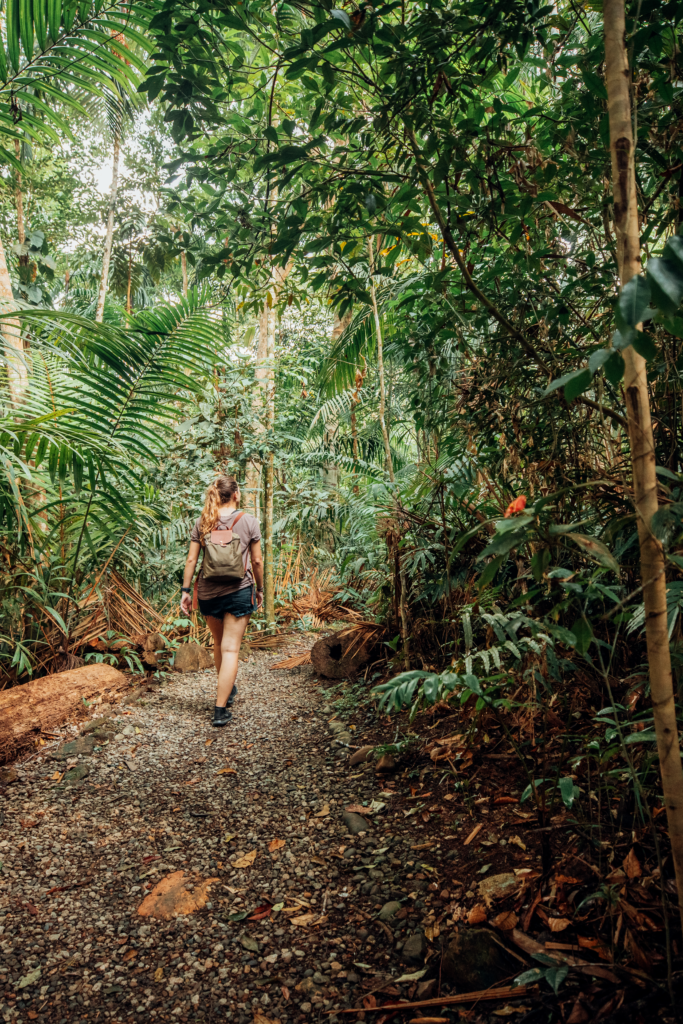

Santa Catalina


Once an undiscovered fishing village, Santa Catalina is now known as one of the best surfing spots in the world.
Things to Do
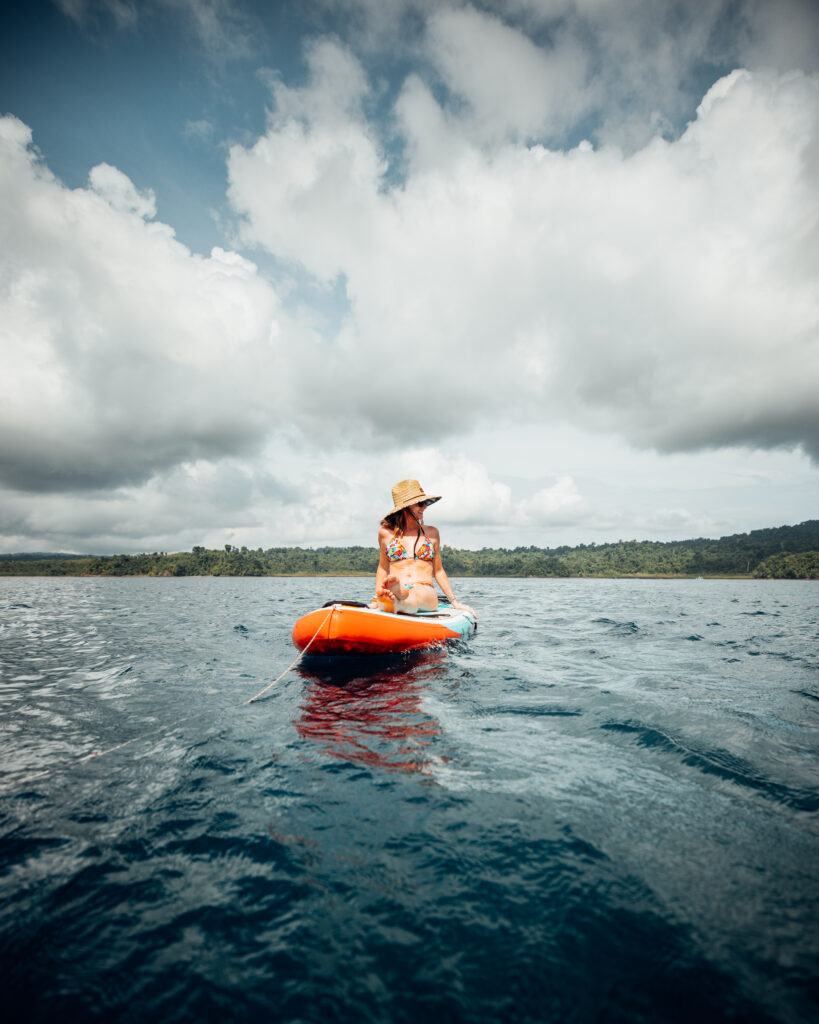

- Playa Santa Catalina: Black sand beaches with waves for experienced surfers.
- Take a surfing lesson: Playa Estero offers smaller waves and is home to many surfing schools.
- Coiba National Park: Take a day trip from Santa Catalina to this marine reserve where you can swim with the whale sharks between December and April. June through October is both turtle-hatching and humpback whale season, offering plenty of wildlife-watching opportunities.
- Kayak to Isla Catalina: Book a kayaking tour and paddle out to this peaceful island where white sand beaches await.
Riviera Pacifica
A string of white-sand beaches line the coast of Panama’s Riviera Pacifica, a laid-back destination with plenty of luxury accommodations and all-inclusive resorts to choose from.
Things to Do
- Treat yourself to a massage on the beach
- Indulge in a spa day
- Go surfing
- Try your hand at kitesurfing
- Hit the links on the scenic golf courses
- Go shopping in Coronado
Panama Weather
Panama remains a tropical getaway year-round, with temperatures never falling below the mid-70s.
Late December through the end of April is considered Panama’s dry season and the best time of year to visit weatherwise.
May to December is the country’s winter, which brings clouds and rainier weather. Along the coast, rain showers are tropical in nature (lasting only for short periods each day). Travelers who visit during the rainy season will be rewarded with fewer crowds, bigger bargains, greener landscapes, and possible humpback whale sightings.
You Might Also Like:
• The 8 Best Ticket Websites for Booking Day Tours and Travel Activities• The Best Travel Leggings of 2023
• The Ultimate Camping Packing List: 29 Essentials
• Is Amazon Prime Day Worth it for Travelers?
• 10 Amazon Prime Day 2023 Secrets That Will Save You Even More Money
We hand-pick everything we recommend and select items through testing and reviews. Some products are sent to us free of charge with no incentive to offer a favorable review. We offer our unbiased opinions and do not accept compensation to review products. All items are in stock and prices are accurate at the time of publication. If you buy something through our links, we may earn a commission.
Related
Top Fares From
Today's Top Travel Deals
Brought to you by ShermansTravel
France: 8-Night Paris, Avignon & Nice...
Infinity Worldwide Vacations


Poconos: 3 Nts in Garden of...
ResortsAndLodges.com


7-Nt Canada & New England Cruise,...
Princess Cruises





